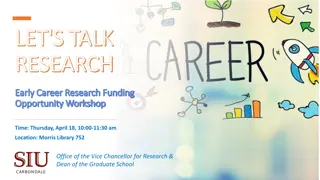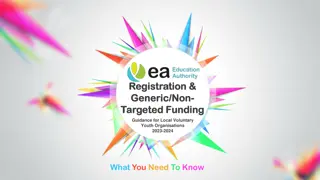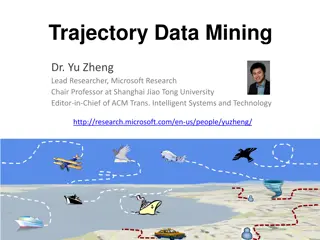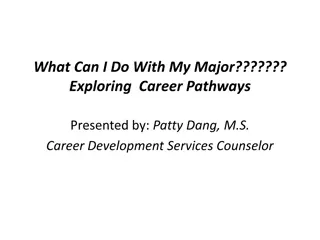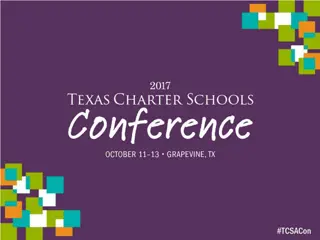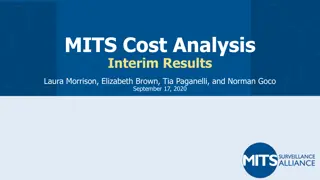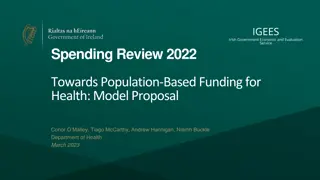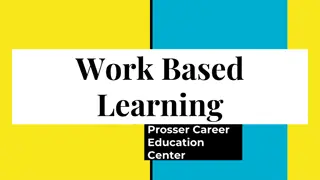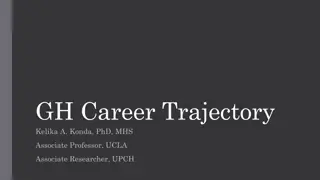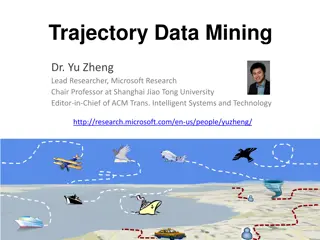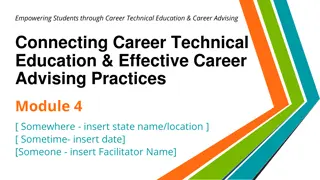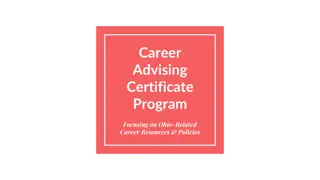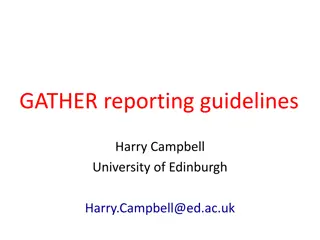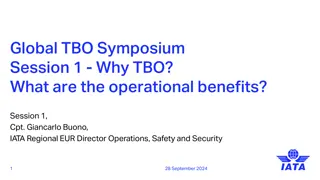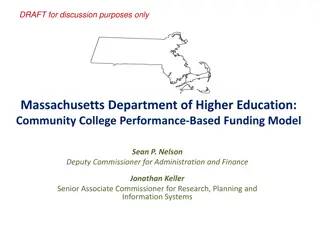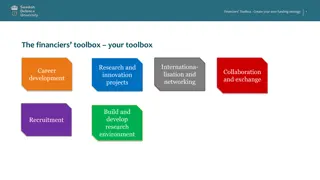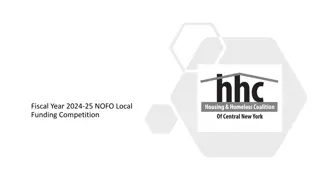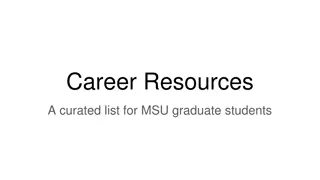Career Development and Funding Trajectory in LMIC-based Global Health Model
Kelika A. Konda, MHS, PhD, shares her career trajectory from Masters to Doctorate, Post-doc, and beyond, focusing on teaching, mentoring, and hosting global health programs. She discusses funding trajectories, creative ways to fund research projects, and highlights her assets in LMIC study populations and local connections.
Download Presentation

Please find below an Image/Link to download the presentation.
The content on the website is provided AS IS for your information and personal use only. It may not be sold, licensed, or shared on other websites without obtaining consent from the author. Download presentation by click this link. If you encounter any issues during the download, it is possible that the publisher has removed the file from their server.
E N D
Presentation Transcript
GloCal Health Fellowship Career Development: LMIC-based GH model Kelika A. Konda, MHS, PhD
Career trajectory Masters (Thesis in Peru) Doctorate (Dissertation in Peru) Post-doc (based in Peru) Peace Corps College Work in Peru I have lived in Peru since finishing the classes for my masters in 2004, though I spent 2 9-month periods in the US for classes during my PhD Parallel to all of this there is teaching and mentoring: Coordinator of the Epidemiology series at a masters (since 2008) and now doctoral program at UPCH (since 2016) Since 2016, I have hosted a month-long GH program for UCLA students I have 1 GloCal student, 4 masters students & 1 PhD student (this year) Institutional participation: I have been a member of the UPCH IRB since ~2015
Funding trajectory (2009 now) K01 (PI)/GloCal & International R01 (unlisted Co-I) Doctorate (F31 for dissertation) Post-doc (T32) + R34 + sentinel surveillance 2 R01s + UNITAID, Co-I on all A K01 is a grant for junior investigators Blessing (5 years of full funding) Curse you aren t allowed to be on other grants and when the funding ends you have to fulfil 100% of your salary Now post-K01, my salary is pieced together from a variety of sources: research projects/teaching/consultancies/grant writing
Creative ways to fund research projects and salary C O L L A B O R A T I O N! Funding from: NIH, WHO, UNAIDS, UNITAID, CFAR, Peruvian National Science Foundation, Peruvian Ministry of Health, University of Hawaii, industry, etc. Although I had full funding for my K01, I knew I could not afford not to collaborate with others during that time Though I worked without being paid on others grants during that time those grants or the next step of those grants is now paying (part of) my salary
Assets Access to LMIC study populations Local connections working with the Ministry of Health Establishing and maintaining relationships with potential collaborators Epi/ stats skills If you look at my publications, I am primarily 2nd author (analysis) Language/cultural skills I am entirely fluent in Spanish Teaching and mentoring Former students are now collaborators Research is a small world keep that in mind as you wade through
Where does family fit in? So how do you fit in all of this + two kids, a dog that s been with me since Peace Corps, and a husband? My first child was born in the final year of my PhD My second child was born during my time on the T32 Honestly, I have no idea how one would do it in the US. Here, I have help. I can afford a full time nanny and a part time housekeeper/cook (this is the norm for the middle-class in Peru) When my husband and I are both traveling my mom comes to stay with the kids Is it humbling to admit the level of privilege that allows me to do this? Absolutely.
How to contend with the inequities within GH? F&A For those of you at US institutions, your F&A is often 50%+ It is capped at 8% for international institutions, though this will not cover the actual costs Think about US institutions & their IRBs/Library access!/admin staff and support for grants management/etc Training opportunities Fogarty is one of the only parts of the NIH that provides training for international fellows. The K01 I had was only for US citizens. There are K01s for international fellows within Fogarty (1 in the past 5 years has gone to someone from Latin America) Salary A lot of GH falls short of true collaboration First authors are very often not from LMICs Many initial opportunities for students to experience GH occur when they cannot provide actual support to the international site, great for sparking interest, but a drain on the hosts Too often non-LMIC researchers take credit for international accomplishments



